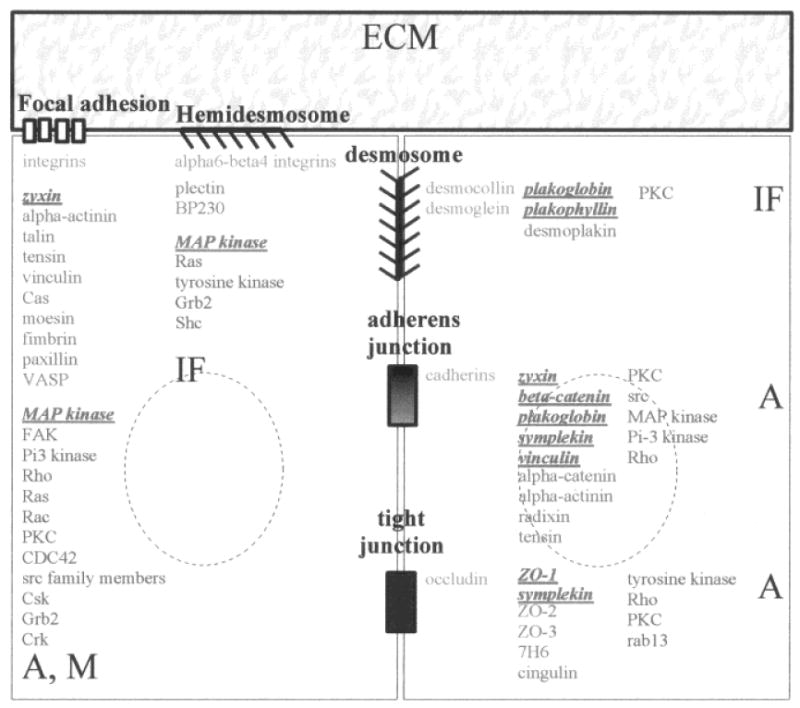Fig. 1.

Organization of cell-cell adhesion complexes (tight junction, adherens junction, desmosome) and cell-ECM adhesion complexes (focal adhesion, hemidesmosome). The formation of cell-cell and cell-ECM interactions involves specific cell membrane adhesion molecules (blue), that interact with connective membrane skeleton (CMS) proteins (green). CMS proteins themselves interact with other cytoskeletal proteins to organize cytoskeleton networks (A: actin microfilaments; IF: intermediate filaments; M: myosin filaments). Moreover, biochemical signal transducers (purple) are found at the cell membrane or in its vicinity and participate in the regulation of cell adhesion complexes and/or in the transfer of signals initiated at cell adhesion complexes. Some CMS proteins (red), as well as biochemical signal transducers (red), have been observed in the nucleus under specific circumstances. The list of cell adhesion complex components is nonexhaustive.
